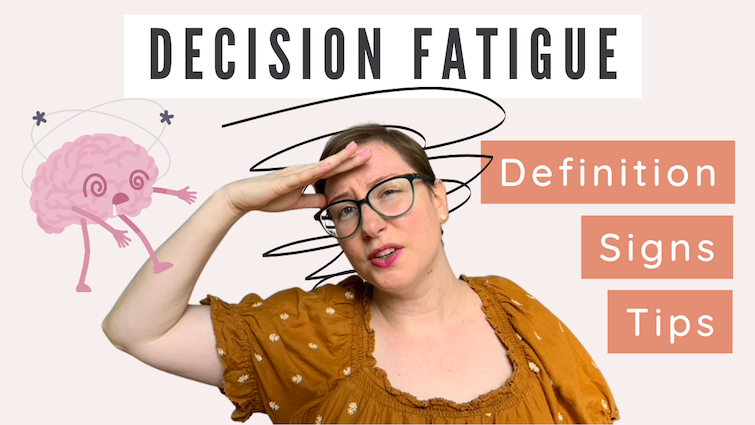Should you Sell or Donate your decluttered items? (Practical Guidelines)
Selling or donating are usually the big two categories of what people first think of doing with their decluttered items. However, you have a few more options than that. In this blog post, I tell you your five possibilities for decluttered items. I also give you practical guidelines to determine which path makes the most sense for your situation.
You can watch the video 🎥, or read the blog post - whichever sparks more joy.
What do you do with your decluttered items?
You are ready to let go of the clutter, but where will you put it? It's not all trash. They're valuable things, and you want not to waste them. What is the best way?
There are 5 possibilities:
You can sell it
You can donate it
You can give it to a friend or a family member
You can recycle it
You can put it into the trash
Which one do you pick? You may have hundreds of items that you decluttered or are planning to declutter, and each item needs one of those decisions.
These are a lot of decisions!
Why you need a Let-Go-Strategy before you start decluttering
If you have seen any of my other videos before, you know that I always say you need a compass so you know where you're going before you start. This part of the KonMari Method is called creating your "Ideal Lifestyle Vision." Only after you've done this you would start the decluttering process.
But before you dig in and get crazy about pulling out all your things, you need a plan on where to put all the things you don't want to keep anymore. I call this your "Let-Go-Strategy." Having this plan in place before you start decluttering will make your decluttering journey more straightforward!
Because if you haven't, then everything you decluttered will pile up in your bedroom, your hallway, or the trunk of your car, and you don't even know where to bring it. This means overwhelm will be the logical consequence because now the things aren't hidden behind closet doors but are in the open (or in bags and boxes), and stress you even more.
How do you find out what strategy you want to do? First, you need to know your preference for the whole decluttering process.
How do you decide on your Let-Go-Strategy preferences?
There are 4 different ways to think about it:
Preference #1: Time
Do you want to declutter fast or slow, or something in between? And what does this mean timewise? Can you do the KonMari Tidying Festival in six months, or do you need a year? Which one is your preference - fast vs. slow?
Preference #2: Money
Some people would like to earn money by selling the items they declutter, and others don't care about it. They just want to let go of the things they don't want any money for it. They might even spend money that the items are picked up faster. Which one is your preference - earning vs. spending money?
Preference #3: Energy
How easy, complex, or difficult do you want your Tidying Festival to be? If you want it really easy, you might not be selling anything because that takes a lot of time and energy away. However, then you can't earn money with it. Easy can also mean that you pay somebody else to come and pick up all the decluttered items or you put them into the trash. Which one is your preference - easy vs. complex or difficult?
Preference #4: Sustainability
How sustainable shall that whole process be for our environment? Do you care about your environmental footprint and how much trash you produce? If so, then part of your Let-Go-Strategy will be finding the right places to recycle, sell, or donate your items so they won't end up in the landfill. Which one is your preference - sustainable vs. unsustainable for our environment?
These four preferences can be different for each of the five KonMari categories. You might pick one thing for clothes, but choose a different strategy for books, paper, Komono (miscellaneous), and sentimental items. It's not one size fits all. It depends on each of the categories and your preferences on time, money, energy, and sustainability.
My professional advice to you
To make it less overwhelming, I recommend you don't think about a Let-Go-Strategy for all of the categories right at the beginning but only think about the first category, which is clothes.
This way, you can train your decision-making muscle. This means the decisions of what sparks and doesn't spark joy for you and the decision if you prefer selling, donating, gifting, recycling, or putting certain items into the trash.
Ask yourself:
Do I want it the fastest way or at a slower pace?
Do I want to save money or spend money?
Do I want it simpler or more complicated?
Do I want to care for our environment, or is this not my highest priority in that scenario?
Your belongings are your responsibility!
The fact is that all your belongings are your responsibility. Either you bought them, or they were gifted to you, and you accepted them. So now they're part of your belongings, and you're responsible for making a decision.
This means each thing that is supposed to leave your house needs a new home. The home can be another person, a store or charitable organization, a recycling center, or a trash can.
If you have many belongings, it means a lot of responsibility. I don't say that to shame you because it's alright to own a lot of things and be responsible for many things. I tell you to amplify your awareness that this is part of the KonMari journey.
The two extremes of how to let go of your items
There's a range of how you can decide. You can say, "I want the fastest, the cheapest, and the easiest way." Then take everything and put it out on the curb; it all will go into the trash, and you're free from all the things. That's one extreme.
Another extreme is that you say, "I want it as sustainable as possible. And I wish that I get as much money back for all of the things as possible." Then you sell everything, even if it takes several years. That's a different extreme. I think that most people are in between those two extremes.
Examples and practical tips
Between those two extremes can mean that you say I'm going to donate my clothes, and only if I have a few designer items I try to sell them because only these will bring me some money, and they're worth my time. But it can also mean if your money is very tight, you want to try to sell everything, and then I encourage you to try it out.
Steps when selling your decluttered items:
Take pictures of everything
Put them online
Write a description
Decide on a price
Wait for people to answer you
Schedule a time when they can pick it up or organize shipping
Make the payment process
To sell your decluttered items need a lot of practical steps. Usually, donating is much easier and quicker. But if you want to give selling a try, then do it! But don't waste your time! If you see that so much time is going by and you didn't get much money back, think about donating your items, consider using your time for a side hustle to earn more, and learn new skills simultaneously. When in doubt, run an experiment, reevaluate, and go from there.
How to recycle and donate your clothes sustainably
Another recommendation I want to give you if you want to be more sustainable to our environment is that you don't put your clothes into the trash because all of the toxins in the textiles are not good if they end up in landfills.
Instead, you can bring them to the Goodwill or other charity stores, and often, they recycle them for you. And you can also google "clothes recycling" in your area and bring the clothes there.
If you want to donate your clothes and they're still in good shape, you can donate fancier items to "Dress for Success" or other charities.
Whichever experiment you want to run, do it. But think about it before you start decluttering because that makes life much easier.
Did I sell or donate my decluttered items?
During my decluttering journey in 2016, I had a combination of selling, donating, gifting, recycling, and putting items in the trash. I ran a lot of experiments and learned my lesson how hard it is to sell things. And in the end, most of the things I donated. I donated to Housing Works, The Goodwill, the Salvation Army, and the NYC Public Library. I also personally chose certain items and asked homeless people in our neighborhood if they could use special items. For example, a sleeping bag and suitcase that I never used and wanted to bless another person.
Leave a comment
Now I'm curious. Let me know in the comments what your preference is. Would you try to go on time, to go as fast as possible? Or don't you mind going slow? Would you want to sell your things or try to save as much money as possible during the process (selling vs. donating)? Would you want it easy or complicated? And what about sustainability? Is this important to you?
Free Resources for you
If you want to go deeper into the KonMari Method ®, you can download my free KonMari guide, where I explain every step of the KonMari Method ®.
And if you are ready to rock and roll and declutter everything you own, I made a free digital KonMari declutter checklist.
PS: Sign up for my e-mail update to be informed about new blog post HERE.






Selling and donating are usually the two big categories people think of when decluttering. However, more options and strategies can help you release your items.